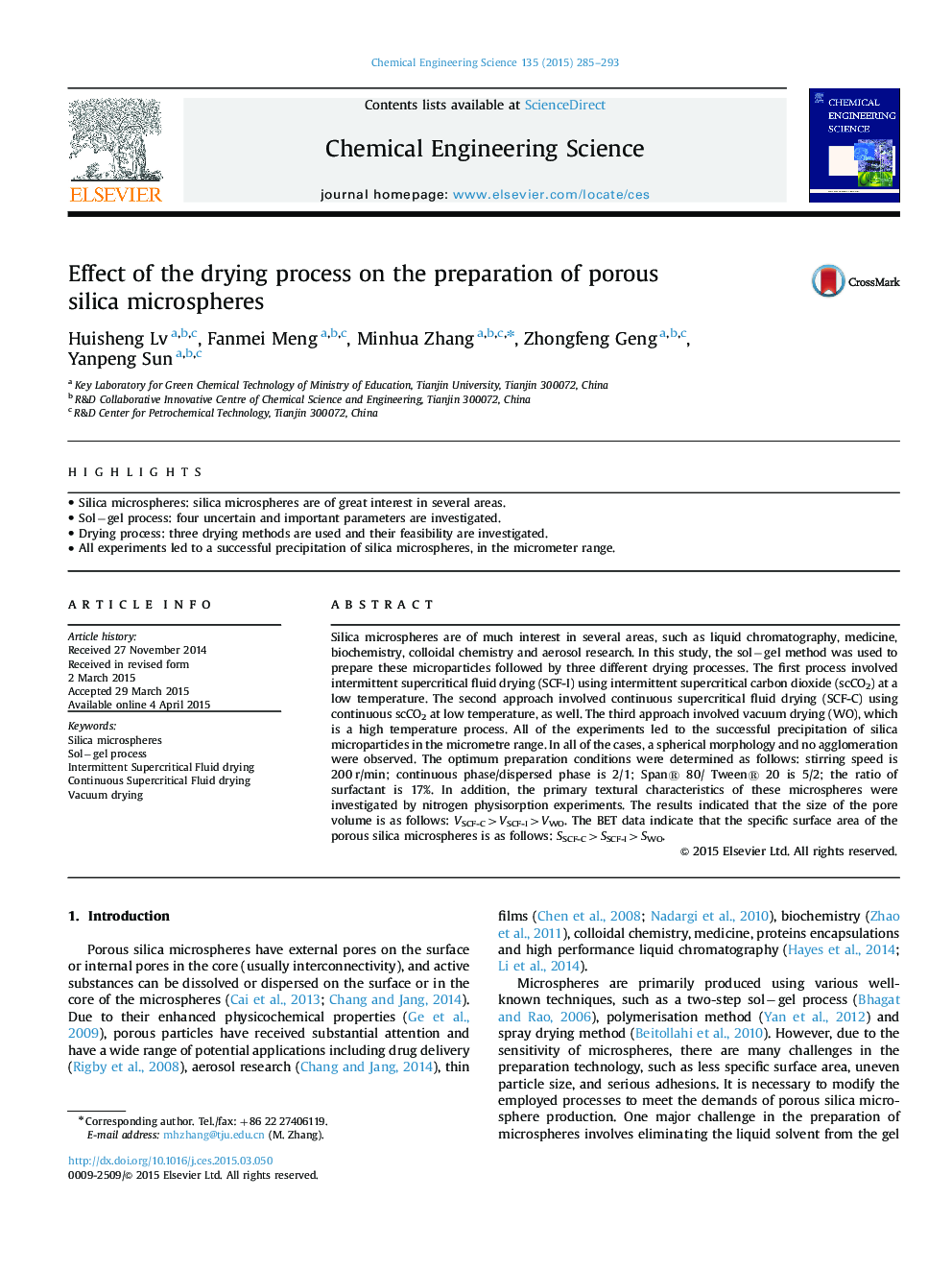| کد مقاله | کد نشریه | سال انتشار | مقاله انگلیسی | نسخه تمام متن |
|---|---|---|---|---|
| 154713 | 456852 | 2015 | 9 صفحه PDF | دانلود رایگان |
• Silica microspheres: silica microspheres are of great interest in several areas.
• Sol−gel process: four uncertain and important parameters are investigated.
• Drying process: three drying methods are used and their feasibility are investigated.
• All experiments led to a successful precipitation of silica microspheres, in the micrometer range.
Silica microspheres are of much interest in several areas, such as liquid chromatography, medicine, biochemistry, colloidal chemistry and aerosol research. In this study, the sol−gel method was used to prepare these microparticles followed by three different drying processes. The first process involved intermittent supercritical fluid drying (SCF-I) using intermittent supercritical carbon dioxide (scCO2) at a low temperature. The second approach involved continuous supercritical fluid drying (SCF-C) using continuous scCO2 at low temperature, as well. The third approach involved vacuum drying (WO), which is a high temperature process. All of the experiments led to the successful precipitation of silica microparticles in the micrometre range. In all of the cases, a spherical morphology and no agglomeration were observed. The optimum preparation conditions were determined as follows: stirring speed is 200 r/min; continuous phase/dispersed phase is 2/1; Span® 80/ Tween® 20 is 5/2; the ratio of surfactant is 17%. In addition, the primary textural characteristics of these microspheres were investigated by nitrogen physisorption experiments. The results indicated that the size of the pore volume is as follows: VSCF-C>VSCF-I>VWO. The BET data indicate that the specific surface area of the porous silica microspheres is as follows: SSCF-C>SSCF-I>SWO.
Journal: Chemical Engineering Science - Volume 135, 2 October 2015, Pages 285–293
